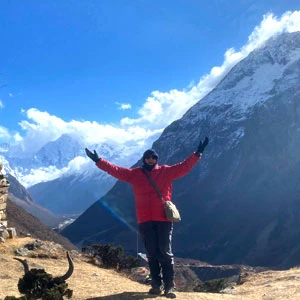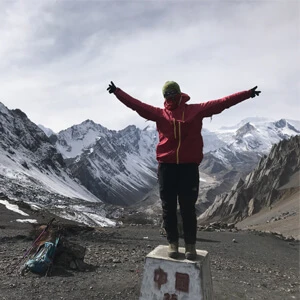Annapurna Nar Phu Valley Trekking Permits & Entry Fees (ACAP & RAP Fees)
The Nar Phu Valley is a stunning restricted area. This means you will need official permission and permits to enter this valley. These permits exist to protect fragile Himalayan ecosystems, preserve local culture, and keep track of who’s venturing into these wild valleys. Additionally, solo trekking in Nar and Phu villages is prohibited; hence, you will need at least two trekkers in your group with a licensed local guide. To get these trekking permits, you will need a valid passport copy.
Here’s exactly what you need:
Restricted Area Permit (RAP): This permit will cost you USD 100 for the first 7 days, then USD 15 for each additional day if you are trekking from September to November. Likewise, if you are trekking between December to August, it will cost you USD 75 for the first 7 days, then USD 15 for each additional day.
Annapurna Conservation Area Permit (ACAP): This permit will cost you NRs 3,000 (about USD 25) per person and is mandatory for all treks in the Annapurna region, including Nar Phu Valley.
Nar And Phu Valley Trekking Costs For 2025/2026
If you are preparing the Nar Phu Valley Trek as your next big Himalayan adventure, here are the details on Nar Phu costs for 2025/2026. Starting at around USD 1,095 per person, this trek offers exceptional value for one of Nepal’s most remote and culturally rich high-altitude experiences.
This 14-day Nar Phu Valley trekking package will cover all the essentials, including trekking permits (both ACAP and Restricted Area Permits), basic tea house accommodation, delicious local meals (breakfast, lunch, and dinner), the guidance of a licensed trekking guide, and round-trip transportation by local bus. While this package provides you with both comfort and authenticity, there are flexible upgrades available on transportation and team support as well.
For flexible upgrades, you must consider adding a porter to lighten your load or swapping the local bus for a more comfortable private jeep ride. A porter will carry up to 20 kg and ease your trekking journey without the burden of a heavy backpack. Similarly, for a smoother experience, you can upgrade the transportation to a private jeep with an additional charge.
Trekking in the remote Nar Phu Valley demands careful planning, reliable support, and attention to safety, especially given its high altitude and restricted area status. That’s why you must choose a trusted, registered trekking agency like Nepal Trekking Experts (NTE) to get the best value for your trekking budget, with safety, comfort, and full compliance with all Nepal trekking regulations. Whether you are carefully managing your Nar Phu Valley trek costs or looking for customized upgrades like porters or private jeep rides, our team will work closely with you to plan a seamless, well-budgeted adventure that fits your needs perfectly.
Preparation Tips For Nar Phu Valley Tea House Trekking
- Understand the Nar Phu Valley Trek difficulty and terrain before you start the journey.
- Build physical fitness with cardio, strength, and endurance training for high-altitude trekking.
- Pack light but include essential trekking gear and layered clothing suitable for changing weather conditions.
- Prepare mentally for remote, challenging, and sometimes unpredictable trail conditions.
- Learn about altitude sickness prevention and plan for proper acclimatization days.
- Hire a licensed guide and porter familiar with the Nar Phu restricted area regulations.
- Budget wisely and carry enough cash, as ATMs are unavailable on the trail.
- Respect and embrace the local Tibetan Buddhist culture and traditions in Nar and Phu villages.
- Allow extra days in Nepal to explore Kathmandu or Pokhara before or after the trek.
- Include buffer days in your itinerary to accommodate weather delays or acclimatization needs.
- Stay updated on weather and trail conditions to plan your daily treks safely.
- Ensure you have travel insurance covering high-altitude trekking and emergency evacuation.
- Prepare for limited mobile network and electricity availability along the trail.
- Stay hydrated and carry safe drinking water solutions like purification tablets or filters.
How Difficult Is The Nar Phu Valley Trek?
The Nar Phu Valley Trek difficulty definitely falls into the strenuous trekking category, so it’s not something to take lightly, especially if you are not used to high-altitude hikes in Nepal. You will be tackling long walking days, steep climbs, and the challenging Kang La Pass at 5,320 meters, which is the highest point on the trek.
Most days on this trek will keep you above 3,000 meters, where the risk of altitude sickness naturally rises, so proper acclimatization and a well-paced itinerary are key to staying safe and enjoying the journey. On top of it, hiring a knowledgeable guide and porter is a smart choice to help you navigate the rugged trail, manage your load, and stay comfortable.
That’s why at Nepal Trekking Experts (NTE), we tailor every Nar Phu Valley Trek itinerary to match your fitness level and trekking experience, making sure you get enough rest and acclimatization time. If you are looking for a remote, off-the-beaten-path adventure in Nepal, our experienced team will help you plan and understand Nar Phu's high-altitude journey.
Altitude Sickness Risks & Acclimatization Guide For The Nar Phu Valley
Altitude sickness is one of those things you can’t just brush off on the Nar Phu Valley Trek. You are going to be spending multiple days above 3,000 meters, passing through high villages like Nar (4,110 meters) and Phu (4,250 meters), before tackling the Kang La Pass at 5,320 meters. That altitude range is exactly where your body gets the real test, and hence, you will need to acclimate well. With the right pace and rest days, you can keep AMS at bay and avoid its more serious forms, HAPE (fluid in the lungs) and HACE (swelling in the brain), letting you fully enjoy the high-altitude magic of Nar Phu.
The risk is higher here because Nar Phu is remote, has rapid altitude gains in places, and there’s no fancy emergency infrastructure. This is why the rest days in Phu and Nar are recommended. You will use these days for short acclimatization hikes to nearby viewpoints or gompas, giving your body the time it needs to adjust.
If symptoms like headaches, nausea, dizziness, loss of appetite, or trouble sleeping show up, you must stop trekking, rest, and hydrate. However, if you still feel uncomfortable, you must descend immediately. Here, Diamox (Acetazolamide) can help as a preventive major or as an early treatment as you catch the symptoms of altitude sickness. Howeverm before you take this medicine, you must consult with your doctor. Now, when you are trekking with NTE, our licensed guides are trained to spot the warning signs early, and they carry an oximeter and basic first aid kits. We also provide you with a customized Nar Phu Valley Trek itinerary to give you the safest possible ascent.
Below are some of the prevention tips for altitude sickness on the Nar Phu Valley Trek:
- Ascend slowly and follow the “climb high, sleep low” principle.
- Stay hydrated and drink at least 3 to 4 liters of water every day.
- Avoid alcohol and smoking at high altitudes.
- Eat enough carbs to fuel your body.
- Never push through symptoms and listen to your body.
- Take rest days seriously and use them for short hikes.
Best Time & Season For The Nar Phu Trek In Nepal
If you want the best time to trek Nar Phu Valley with its stunning views, you must aim to plan for Autumn (September to November) or Spring (March to May). These seasons bring crystal-clear skies, mild temperatures, and jaw-dropping Himalayan backdrops. Also, the trails are dry, and wildlife is more active.
Nar Phu Valley Trek In Spring
One of the best times for the Nar Phu Valley Trek is Spring (March to May). The days during Spring are comfortably warm, the skies stay crystal clear, and the trails burst into color with wildflowers and fresh greenery after Winter’s quiet. It’s the perfect mix of great weather and stunning scenery.
March: Early Spring
- Snow still lingers on high-altitude sections like Phu, Kang La Pass (5,320 meters), and the Himlung Base Camp route, which provides a stunning winter-meets-spring contrast.
- Crisp, crystal-clear mountain views of Himlung Himal, Pisang Peak, and Annapurna II dominate the skyline.
- Fewer trekkers are on the trails; hence, you will get quiet moments at ancient Nar and Phu monasteries.
- Early signs of spring emerge as rhododendron buds appear, along with alpine flowers beginning to bloom at lower elevations.
- Wildlife activity picks up, and it is a good time to spot Himalayan blue sheep, marmots, and the soaring Himalayan griffon.
- Cool but comfortable daytime temperatures with cold nights still requiring warm layers.
- Tea houses reopen in full operation.
- Streams and waterfalls gain strength from melting snow, adding lively sounds to the trekking experience.
April: Peak Spring
- Full bloom of rhododendrons and wildflowers, painting the trails around Meta, Kyang, and Nar Phedi in vibrant reds, pinks, and whites.
- Stable weather with warm daytime temperatures and cool, comfortable nights which is perfect for restful sleep.
- Crystal-clear visibility offers dramatic Himalayan panoramas of Gangapurna, Tilicho Peak, Himlung Himal, and the Annapurna range.
- Vibrant village life in Nar and Phu, with locals busy in fields and monasteries buzzing with activity after the long Winter.
- Ideal conditions for photography as you will notice golden light, colorful landscapes, and cultural portraits without harsh shadows.
- Increased chance of experiencing Tibetan Buddhist rituals, local pujas, and traditional gatherings in monasteries.
- Kang La Pass becomes more accessible.
- Shepherds start bringing livestock back to the high pastures.
- High wildlife activity, including Himalayan blue sheep, mountain goats, and soaring lammergeiers in clear skies.
May: Late Spring
- Trails are fully open and snow-free, including Kang La Pass and the Himlung Base Camp route.
- Lush green meadows and blooming alpine flowers carpet Nar, Kyang, and Phu Valley.
- Wildlife activity peaks, with frequent sightings of Himalayan tahr, marmots, blue sheep, and diverse bird species.
- Fewer trekkers compared to April.
- Stable trail conditions and the best time for side trips to remote viewpoints, hidden valleys, and glacial lakes.
- Mild winds and warm daytime temperatures.
- Possible early pre-monsoon clouds toward late May.
- Rivers and waterfalls are at their most vibrant.
- Longer daylight hours extend trekking time.
- Occasional evening breezes, and you will notice the scent of alpine herbs and wildflowers through the valleys.
Autumn (September to November)
Autumn in the Nar Phu Valley is trekking at its finest with crisp mountain air, golden fields, and a sky so clear you can almost touch the peaks. September to November is the best time for trekking in Nar Phu Village in Nepal as the weather is rock-solid, the trails are dry, and the landscapes explode in warm Autumn colors. You will also get jaw-dropping views of Annapurna II, Himlung, and Kangaru.
September: Early Autumn
- Fewer trekkers than peak Autumn, which is perfect for peaceful Nar Phu Valley trekking.
- Mixed weather during early September, and it starts improving quickly with more stable conditions.
- Lush green landscapes from recent Monsoon rains.
- Clear and stunning views of Annapurna II, Himlung Himal, Kangaru, and Pisang Peak.
- Waterfalls and mountain streams flow at their peak after the Monsoon season.
- Occasional sightings of migrating Himalayan birds, including Himalayan griffon vultures and blood pheasants.
- Active wildlife like blue sheep (bharal), Himalayan marmots, and Himalayan tahr live in the valleys and slopes.
- Monasteries in Nar and Phu reopen, with locals preparing for the important Autumn festivals.
- Trails are generally dry but can still be slightly muddy in shaded or forested sections.
October: Peak Autumn
- Perfect trekking conditions with dry trails, clear blue skies, and moderate daytime temperatures.
- Breathtaking panoramic mountain views of Annapurna Massif, Himlung Himal, Kang Guru, and Tilicho Peak.
- Golden barley and buckwheat fields are ripe for harvest in Nar and Phu villages.
- Festive cultural atmosphere as locals celebrate major festivals like Tihar and Dashain.
- Optimal time to cross Kang La Pass with minimal snow and stable trail conditions.
- Colorful Autumn foliage mixed with some late-blooming alpine flowers enhances the natural scenery.
- Excellent weather for the Himlung Base Camp side trip as it offers clear views and safer trekking routes.
- Fully operational tea houses provide warm hospitality, nutritious meals, and comfortable lodging.
- Wildlife activity remains visible with chances to spot Himalayan blue sheep, marmots, and various alpine birds.
- Crisp, cool nights are perfect for acclimatization and restful sleep before high-altitude days.
- Trails are mostly dry and firm, reducing the risk of slips or delays due to weather conditions.
November: Late Autumn
- Fewer trekkers than in October, which offers peaceful and scenic trekking experiences.
- Stunning golden morning and evening light illuminating snow-capped Himalayan peaks.
- Prime time for photography around Nar Phedi Monastery and the Kang La Pass area.
- High chances of spotting wildlife such as Himalayan blue sheep (bharal), yaks, and Himalayan griffon vultures.
- Noticeably colder temperatures, so it is essential to pack extra warm layers for comfort and safety.
- Possible early snowfall near Kang La Pass and Phu village toward the month’s end.
- Dry and firm trails, providing safe and reliable trekking conditions.
- Clear skies with excellent mountain visibility, enhancing panoramic views of Annapurna, Himlung, and Kang Guru.
- Cooler nights promote better acclimatization during high-altitude trekking days.
Winter Trekking In Nar Phu Valley
Winter trekking in the Nar Phu Valley (December to February) is definitely doable, but you will need to be well-prepared with a flexible itinerary. The trail transforms into a Winter wonderland with heavy snowfall, biting cold, and tricky conditions, especially up high around Kang La Pass and Phu village.
Temperatures can plunge below -15°C, and deep snow often makes sections like the Kang La Pass inaccessible. That said, early December still offers a sweet window with clearer skies and more stable weather. December is a perfect time to trek in Winter if you are seeking solitude and jaw-dropping views of peaks like Himlung Himal, Kang Guru, Annapurna II, and Tilicho Peak.
If you are trekking Nar Phu in December, you should expect shorter daylight hours, icy trails, frozen rivers, and even potential avalanche zones at higher elevations. The lower parts, however, tend to be less snowy but still cold. For wildlife lovers, you might catch glimpses of elusive blue sheep, Himalayan foxes, and, if you are really lucky, a rare snow leopard. Winter trekking here is best reserved for experienced, well-prepared adventurers with the right gear and a trusted guide by their side.
With proper gear and guidance from local authorised agencies like NTE, the trek is safe and enjoyable. If you are looking for a serene off-season experience with stunning Winter landscapes, the Nar Phu Valley Trek in December is a perfect choice. You can start planning your Nar Phu Valley Trek for December 2025 now. Get in touch with NTE to customize your Winter journey with expert local support.
Is It Possible To Trek Nar Phu Valley In The Monsoon?
Trekking the Nar Phu Valley during the Monsoon season (June to August) isn’t usually recommended, but for adventurous souls craving solitude and lush landscapes, it can offer a unique experience. While the lower regions will face heavy rains, leading to slippery trails, landslides, and leech-prone forests, Nar and Phu sit in a rain-shadow area, so they receive comparatively less rain. Still, you should expect cloudy skies, high humidity, and mist that often limit those iconic Himalayan mountain views.
Monsoon trekking here means you will need to deal with muddy paths, possibly flooded rivers, and sometimes disrupted road access. Tea houses might be closed, and logistics can be challenging, so it’s definitely not a trek for beginners. On the bright side, the lower valleys burst into vibrant greenery with blooming alpine flowers, roaring waterfalls, and moss-covered forests, while wildlife like blue sheep, marmots, and colorful Himalayan birds become more active.
If you are set on Monsoon trekking in Nar Phu Valley, you must hire an experienced local guide as they know the safest routes and can help navigate tricky spots. Furthermore, you must pack rainproof gear, leech socks, and extra layers to stay dry and comfortable.
Do I Need A Guide & Porter For The Nar Phu Valley Trek?
Yes, hiring a guide and porter for the Nar Phu Valley Trek is highly recommended. Since the Nar Phu Valley is a restricted trekking area in Nepal, solo trekking is strictly prohibited. You must trek with a licensed guide registered under a government-authorized agency.
Moving on, the trail can be remote and challenging, with tricky navigation and cultural nuances; hence, you will need to hire a knowledgeable guide. Your guide will take care of communication with locals, manage logistics, and ensure your safety throughout the trek. You should expect to pay around USD 30 to 35 per day for a certified, experienced guide who’s trained in high-altitude trekking and emergency response.
Similarly, a porter is equally valuable as they carry up to 20 kg of your gear, so you can fully enjoy the breathtaking views without being weighed down by a heavy backpack. Porter services typically cost about USD 25 per day. Besides the guide and porter fees, you must remember to budget for tipping separately, at least 10% of the total cost is customary and appreciated.
Altogether, choosing a reputable agency like Nepal Trekking Experts, you will get a professional guide and porter who are all trained in altitude safety. With us, as you hire a guide and porter, you will also contribute directly to supporting the local community.
How To Reach Nar & Phu Valley: Transportation Options & Cost Guide
Getting to the trailhead of Nar & Phu Valley is gives you a sneak peek into the rugged beauty you are about to explore. The journey starts in Kathmandu’s Gongabu Bus Park, where a 6 to 7 hour ride takes you to Besisahar. From there, you can continue to your chosen starting point, Bhulbhule, Jagat, Dharapani, or even Koto, depending on how much trekking you want to do. If you are short on time, you can shave days off the trek by hopping in a jeep and heading further up the trail. With Nepal Trekking Experts, all these transport details are handled for you, so your only job is to enjoy the ride and get excited for the adventure ahead.
Bus or Microvan
If you are driving in a public bus or microvan, you will start the journey from Gongabu Bus Park in Kathmandu, boarding a bus or van bound for Besisahar. It’s a 6 to 7 hour ride that begins at dawn, winding through rolling hills, rushing rivers, and lively roadside towns. Usually, public buses have minimal legroom, and you may be sharing your seat with a sack of rice or a couple of caged chickens. However, for an immersive experience, he public ride offers you glimpses of rural Nepal in all its unfiltered glory. This public ride from Kathmandu to Besisahar will cost you around NRs 1,000 per person.
From Besisahar, the vibe changes as you drive through a rugged off-road stretch to Jagat. This 3 to 4 hour ride is can get quite bumpy. Here, you should expect to pay about NRs 2,000 per person.
Private Jeep
If you would rather skip the cramped seats, loud music, and random sacks of rice brushing against your knees, a private jeep to Nar & Phu Valley is your golden ticket. Sure, it’s pricier than the local bus, but in return, you get a comfy seat, actual legroom, and the luxury of leaving straight from your Kathmandu hotel whenever you feel like it. The drive to Besisahar is smooth, and instead of switching vehicles, you can roll right up to Jagat in one go.
It’s especially worth it if you are in a group, traveling with family, or simply want to save your energy for the actual trek. The Kathmandu to Jagat jeep ride will set you back around NRs 30,000 (USD 250), which, split between a few people, is a fair trade for the comfort and convenience. When your trek ends at Ngawal, you can catch another shared jeep to Besisahar and the next day, you can drive from Besisahar to Kathmandu.
Accommodation, Hot Shower, Meals, & Drinking Water Availability During Annapurna Nar Phu Trek
What Is Accommodation Like In Nar And Phu?
Accommodation in Nar and Phu is simple but cozy, reflecting the remote and authentic vibe of the Nar Phu Valley Trek. You will mostly stay in traditional tea houses and homestays that offer a warm welcome after a long day on the trail. Some of the lower-altitude spots have modern comforts like electricity, Wi-Fi, hot showers, and western-style toilets, which is a nice surprise given how off-the-grid this region is.
As you climb higher, you should expect accommodations to get more basic as shared bathrooms and squat toilets are common, and hot water can be a luxury. Moving on, you will not find proper heating in the rooms, and that’s why Nepal Trekking Experts provide you with a high-quality sleeping bag to keep you warm and comfortable. While the lodges aren’t fancy, they offer a genuine Himalayan experience.
Are Hot Showers Available On The Nar Phu Trekking Route?
Hot showers are available along the Nar Phu trekking route, but most tea houses charge a small fee for a bucket shower. However, with a cost, you must keep in mind that water can be limited, and heating it takes effort, so showers might be quick and basic. To stay fresh on the trail, it’s a smart move to pack essentials like wet wipes, hand sanitizer, and dry shampoo. These little items can make a big difference, especially on colder days or when showering isn’t possible.
What Food & Meals Are Available During The Nar Phu Tea House Trek?
The food available during the Nar Phu Valley tea house trek is hearty, simple, and perfectly suited to keep your energy levels up for those long trekking days. When you book with Nepal Trekking Experts, your package typically includes three wholesome meals daily: breakfast, lunch, and dinner, along with a cup of hot tea or coffee to keep you warm in the chilly mountain air.
Breakfast options usually feature a variety of filling choices such as omelets, boiled eggs, traditional Nepali chapati (flatbread), tsampa (roasted barley flour, a Tibetan staple), warm porridge, and pancakes. These options give you a good mix of carbs and protein to start your day energized.
For lunch and dinner, you will have more comforting and nutritious meals like thukpa (flavorful Tibetan noodle soup loaded with vegetables), dal bhat (classic Nepali dish of steamed rice served with lentils, vegetable curries, and pickles), and momos (steamed or fried Himalayan dumplings filled with vegetables or meat). The ingredients for the meals are locally sourced whenever possible.
While in Nar Phu Valley, one of the must-try local beverages is yak butter tea, a salty and rich drink which is known for its warming and energizing properties. While you will also find local alcoholic drinks, such as chang (a traditional barley beer), at some stops, we recommend that you avoid them to maintain your stamina throughout the trek.
Now, if you have any dietary preferences or restrictions, you must communicate these clearly to your Nepal Trekking Experts guide before the trek begins. With this, your guide will be able to inform the kitchen staff at the tea houses in advance, ensuring your meals meet your needs throughout the journey.
Additionally, Nepal Trekking Experts also carry snacks like seasonal fresh fruit, dry fruits, and nuts, so you will have energy boosts available between meals or during long trekking days. To round off your experience, NTE also provides a special dinner either at the start or end of your trek in Kathmandu to celebrate your adventure.
Is There Safe Drinking Water In Nar Phu?
When trekking through the Nar Phu Valley, safe drinking water is definitely something you want to plan for carefully. Most tea houses along the trail offer boiled or purified water, but you must keep in mind that there’s usually a small extra fee for it. Bottled water is also available, though prices tend to climb as you go higher into the valley, especially above 3,500 meters, where supply is limited.
Similarly, you will also find natural water sources like streams and rivers, but it’s crucial to treat any water you collect from these spots to avoid getting sick. For this, you must carry a reusable water bottle along with water purification tablets or a portable filter.
Nar Phu Valley Trek Packing List: Recommended Trekking Gear And Equipment
Clothing:
- Moisture-wicking base layers (tops & bottoms)
- Fleece or down insulated jacket
- Lightweight, windproof, and waterproof shell jacket
- Waterproof trekking pants
- Trekking shirts (quick-dry)
- Warm thermal innerwear
- Insulated gloves & liner gloves
- Warm hat/beanie
- Buff or neck gaiter
- Trekking pants (lightweight and insulated)
- Sports bra and underwear (for women)
Footwear:
- Waterproof trekking boots (well broken-in)
- Socks (wool or synthetic)
- Camp shoes/sandals (for tea houses)
Trekking Gear & Equipment:
- Backpack (40 to 60L) with rain cover
- Daypack (20 to 30L) for side hikes
- Sleeping bag (rated for -10°C to -15°C)
- Trekking poles (highly recommended)
- Headlamp with extra batteries
- Sunglasses (UV protection)
- Water bottles or hydration bladder (2 to 3L)
- Water purification tablets or filter
- Dry bags or ziplocks (for waterproofing gear)
- Lightweight towel
- Power bank & charging cables
Personal Items & Toiletries:
- Sunscreen (SPF 50+)
- Lip balm with SPF
- Toiletries (toothbrush, toothpaste, biodegradable soap)
- Wet wipes & quick-dry towel
- Hand sanitizer
- Toilet paper & small trash bags
- Basic first aid kit (band-aids, blister pads, antiseptic, meds)
- Personal medications
- Snacks (energy bars, nuts, chocolate)
Is Travel Insurance Required For The Nar Phu Trek?
If you are planning the Nar Phu Valley Trek, travel insurance is absolutely mandatory. Given the trek’s high-altitude challenges and remote location, your insurance needs to cover emergency evacuation, high-altitude sickness treatment, and any medical care you might require along the way. Accidents and altitude-related illnesses can happen unexpectedly, so having the right coverage gives you real peace of mind.
While buying the insurance, you must make sure your policy also includes adventure activity coverage, because trekking in rugged Himalayan terrain counts as an adventure sport. It is also smart to look for protection against trip cancellations, theft, and personal liability. Lastly, you must double-check that your insurance covers trekking at altitudes of at least 6,000 meters since Kang La Pass tops out at 5,320 meters.
Electricity, Mobile Network, & Wifi Availability For The Nar & Phu Village Trek
Electricity & Charging Facilities In Nar & Phu Village
Electricity and charging facilities are available in all the main villages along the Nar Phu Valley trek, including Nar and Phu themselves. However, you should not expect the convenience of charging right in your room everywhere, as some tea houses require you to visit a common charging area. Also, you must be prepared for a small extra fee for charging your devices. So, it’s a good idea to carry a power bank and keep your devices charged when you have access, especially because electricity can be intermittent.
Mobile Network & Connection In Nar Phu
Mobile network coverage in the Nar Phu Valley is surprisingly reliable given its remote location, with service available throughout most areas along the trek. Among the major service providers, Nepal Telecom (NTC) generally offers better and more consistent signal strength compared to Ncell, especially as you move higher into the valley. If you want to stay connected, it’s a smart move to buy your SIM card before starting the trek, either in Kathmandu or Pokhara, so you are ready to go once you hit the trail. Also, while mobile data is available, speeds can be slow, and occasional blackouts may happen due to the rugged terrain.
Wifi In the Nar And Phu Valley
Wi-Fi is generally available throughout Nar and Phu Valley, but you must not be surprised if the connection gets spotty or slow in some of the more remote tea houses. Most places along the trail charge a small extra fee for Wi-Fi access, so it’s good to budget for that if staying connected is important to you. Honestly, a smarter move is to buy a local data package when you get your SIM card in Kathmandu or Pokhara as this often gives you more reliable internet on the go without relying solely on Wi-Fi hotspots.
Nepal Visa, Currency, & ATM For The Nar Phu Trekking
How Can I Apply For A Nepal Entry Visa?
Getting your Nepal entry visa is pretty straightforward and traveler-friendly. You can easily get a visa on arrival at Tribhuvan International Airport in Kathmandu or simply apply for a visa at the Nepalese Embassy or Consulate in your home country before departure. Here, you can choose to apply for 15, 30, or 90-day visa options depending on your trip length.
While online payment is possible, we usually recommend carrying cash in US dollars or Euros as it's the simplest and fastest way to handle the visa fee at the counter. Moving on, for the Nepal visa, you should also have a minimum of six months of validity remaining on your passport. Now, you can also extend your visa from the offices of Nepal Immigration in Kathmandu and Pokhara.
What Currency Is Used In Nepal, & Can I Exchange On The Trek?
In Nepal, the official currency is the Nepali Rupee (NRs), and you will find it is the only accepted currency once you are on the trek. While you can easily exchange money at banks or authorized exchange centers, these services are only available in city areas like Kathmandu or Pokhara. Credit cards are also accepted in the cities, but you won't find them anywhere along the Nar Phu Valley trekking route. So, it is super important to carry enough cash in smaller denominations before you hit the trail.
Are There ATMs On The Trails Of The Nar And Phu Village Trek?
If you are wondering about ATMs on the Nar and Phu Valley trekking route, you won’t find any once you are on the trail. ATMs are only available in major cities like Kathmandu or Pokhara, so it’s essential to withdraw enough cash before you set off. However, you must make sure that cash withdrawals often come with bank fees.
Why Book Your Nar Phu Valley Trek With Nepal Trekking Experts (NTE)?
Well, for starters, the Nar Phu Valley is a restricted area, which means you need to trek with a licensed, government-authorized agency. Nepal Trekking Experts has been guiding adventurers for over a decade and is fully certified and trusted by the Nepal Tourism Board, NMA, and TAAN. In short, we are your professional support system for a safe, smooth, and unforgettable journey.
Here’s why trekking Nar Phu with NTE makes all the difference:
- Local Expertise: Our guides and porters are locals, so you not only get professional support but also an enriching cultural experience while directly supporting the local communities.
- Safety First: Your safety comes before anything else. From high-altitude training to emergency response, we prioritize your well-being at every step.
- Custom Flexible Itineraries: We design flexible itineraries based on your timeframe, fitness level, and preferences.
- Free Trekking Gear: We provide quality trekking equipment free of charge such as down jacket, trekking poles, crampons, and so on.
- Value for Money: We make sure every dollar you spend translates into an experience that’s rich, comfortable, and unforgettable.
- Proven Track Record: Having completed this trek hundreds of times, we are loved and trusted by trekkers worldwide, and our 5-star reviews on TripAdvisor speak for themselves.




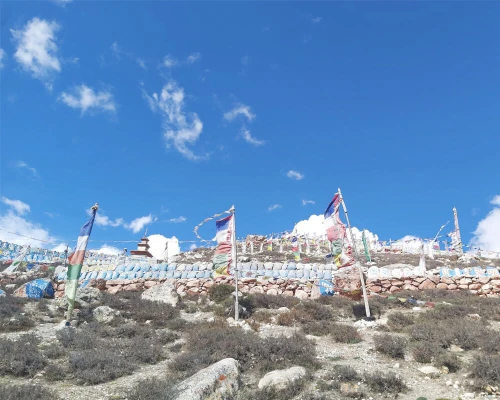
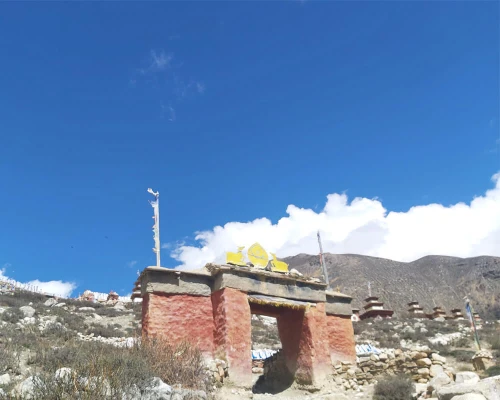
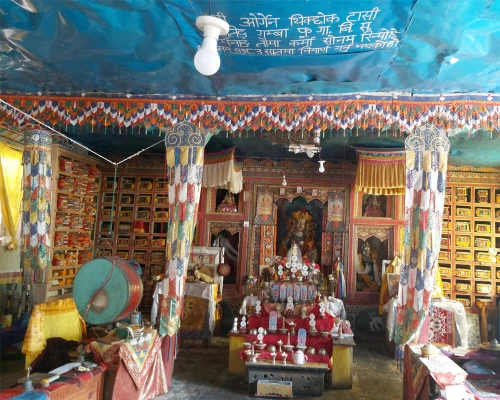
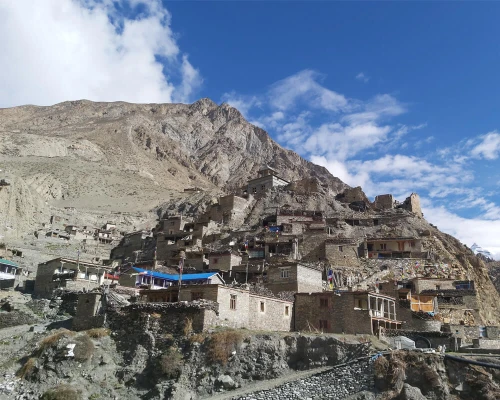
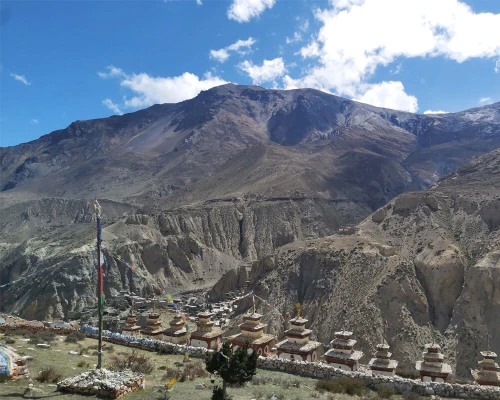


 based on 83 reviews
based on 83 reviews




